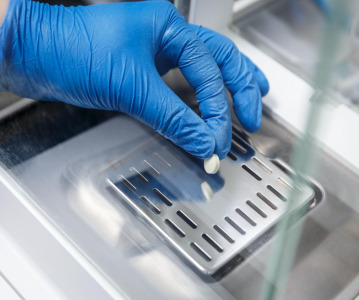Big Pharma Fights Drug Rulings In India
Landmark drug patent protection cases involving Bayer, Roche, and Novartis are advancing in India this month. Together, they will help determine how friendly the country is to Western pharmaceutical makers.
Landmark drug patent protection cases involving Bayer, Roche, and Novartis are advancing in India this month. Together, they will help determine how friendly the country is to Western pharmaceutical makers.
On Sept. 3, Bayer filed an appeal with the Intellectual Property Appellate Board in Chennai over a compulsory license order entitling the Indian firm Natco Pharma to produce a generic version of the Bayer kidney and liver cancer drug Nexavar. Issued in the spring, the license let Natco onto the market by paying Bayer a modest 6% royalty on sales of the generic drug. The order marks the first time that a foreign branded drug has been subject to compulsory licensing in India.
On Sept. 7, Roche lost a case in the High Court of Delhi, where it had argued that the Indian drug producer Cipla was infringing on its patents by selling a generic version of the lung cancer drug Tarceva. In a 275-page ruling, the court sided with Cipla’s contention that Tarceva is based on a different polymorph of the active ingredient erlotinib than the one Roche patented in India. Roche had attempted to patent the different polymorph, but India rejected it as too similar to the patented one.
“We are strongly considering an appeal,” Roche says. “Many of the cheap generic drugs today used in India were once patent-protected and are only available to society because companies such as Roche were willing to take a risk by investing in new innovative drugs.”
Meanwhile, on Sept. 11, Novartis began contesting in India’s Supreme Court key features of the pharmaceutical patent regime that the country instituted in 2005. The Novartis challenge follows India’s repeated refusal to grant patent protection to the cancer drug Gleevec on the grounds that it is nothing more than a new crystal form of an older compound. Gleevec enjoys patent protection in most major markets around the world.
“Novartis challenged the decision not to grant a patent to our life-saving medicine Gleevec because we strongly believe safeguarding incentives for innovation through the granting of patents leads to better medicines for patients,” the company says.
Although each case involves its own complex scientific and legal circumstances, drugmakers and patient activists are watching the disputes for the tone they collectively will set about intellectual property protection in India. Some observers see India as a model for the developing world.
Legal and medical scholars Peter Roderick and Allyson M. Pollock, at Queen Mary, University of London, argue that India’s system of intellectual property protection “should help rather than hinder” access to drugs in India. “The Bayer and Novartis cases are seeking to undermine public health considerations aimed at improving access and therapeutic advantage,” they write
By Jean-Fran?ois Tremblay
Related News
-
News Women in Pharma: Our hopes for 2025 and beyond
Our last instalment for 2024 of the Women in Pharma series brings you messages direct from the Informa Markets CPHI team as they discuss the advice and insights they have carried throughout their roles working at CPHI, and what they hope to see for the... -
News CPHI Milan 2024 - From the Floor
Milan and CPHI welcome you to 2024 CPHI Milan! As we celebrate the 35th edition of our flagship CPHI show, editors Vivian Xie and Lucy Chard bring you the latest from the show floor, conference sessions, and innovative solutions from all exhibitors, at... -
News The BIOSECURE Act: implications for the pharma supply chain
On September 9, 2024, the US House of Representatives voted to pass the bill titled the BIOSECURE Act (the Act), which lists several Chinese companies in the pharmaceutical supply chain. The Act will prohibit American companies from contracting or doin... -
News A Day in the Life of a Global CDMO Chapter Lead – Manufacturing
The 'Day in the Life of' series has covered many aspects of the pharmaceutical pipeline, including R&D and procurement, now we're taking a look at manufacturing from a global CDMO perspective. -
News CPHI Milan Speaker Spotlight: CDMO relations with Pharma and Start-Ups
In the run-up to CPHI Milan, we sit down with some of the experts and thought-leaders speaking at this year’s conferences. -
News Women in Pharma: Advocating for trans healthcare in pharma
In our monthly series on women in the pharmaceutical industry, we interview leading experts in the pharmaceutical supply and value chain to discuss the importance of gender diversity in healthcare, the workplace, and beyond. -
News Updated – Changing abortion pill access according to the US FDA and Supreme Court
After the approval of the medical abortion pill, mifepristone, by the US FDA, states across the USA approach the distribution of the pill differently, some ruling against allowing access to the drug. -
News CPHI North America 2024 – From the Floor
Welcome to Philly! CPHI North America once again graces the Philadelphia Convention Center, 7–9 May 2024.
Position your company at the heart of the global Pharma industry with a CPHI Online membership
-
Your products and solutions visible to thousands of visitors within the largest Pharma marketplace
-
Generate high-quality, engaged leads for your business, all year round
-
Promote your business as the industry’s thought-leader by hosting your reports, brochures and videos within your profile
-
Your company’s profile boosted at all participating CPHI events
-
An easy-to-use platform with a detailed dashboard showing your leads and performance
.png)




.png)

